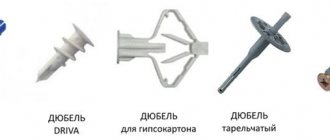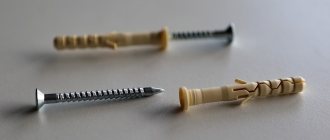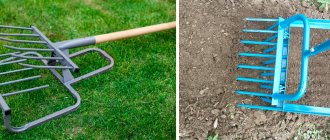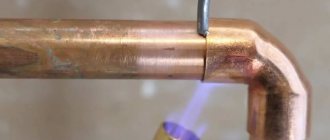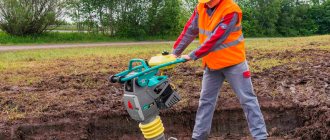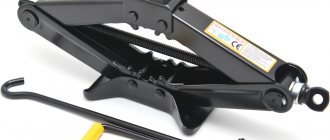Compared to mechanized digging, manual digging is unprofitable, but it is useful when there are no conditions on the site for the use of bulldozers.
To dig a trench with your own hands from scratch, you need to familiarize yourself with the digging technology, as well as find out what tools are used for this.
When is this method appropriate?
Trenches are dug in areas for installing a water supply system, laying a cable or gas pipeline, as well as for connecting a sewer pipe to a septic tank.
There are several factors that determine shoveling instead of bulldozing:
- Communications have been laid on the site. It happens that the house has already been built, the water supply has been laid, but the owners decided to install a sewer system after the construction of the house. Neither the place nor the area had been prepared in advance for this. Then you need to dig a trench on an existing piece of land. Trees and bushes can grow on the ground, and electrical cables and gas pipelines can also be laid. In order not to damage these communications with mechanized digging, they use a shovel to dig a trench.
- There is no possibility for equipment to enter the site. It happens that there is a gas pipe near the gate of the facility, which prevents equipment from driving deep into the site. Too narrow streets in dacha areas also cause the use of manual labor.
- Soil type. For highly frozen soil, as well as for hard rocks and gravel, only machine digging is suitable. If the site has loam, sand or soft but loose soil, you can easily dig a trench with your own hands using shovels.
It is not practical to dig a trench by hand if it is too long.
Small trenches for short sections of water, cable, sewer or gas lines can be dug with a shovel using your own labor. This will not only save money, but will help make the trenches the way they should be according to the project.
Processing options
Since ancient times, man has constantly improved his tools to increase productivity and simplify housekeeping. At the same time, a lot of different devices and technologies were invented, some of which are still used today. Therefore, when deciding what to dig at your dacha, it’s worth studying the most common methods and choosing the most suitable ones for specific tasks.
Hand tool
First of all, it is necessary to mention the shovel. Its versatility and ease of use are simply amazing. Therefore, if you need fertile land for your summer cottage, then this tool will help you cope with it without any special financial costs.
A cultivator with a gasoline engine has a high service life and low fuel consumption
Types of DIY digging tools
To develop soil from a trench, several types of tools are used:
Trench . This tool is equipped with a rectangular bayonet and has a pointed tip. The design helps clear the walls of the trench without polluting the nearby soil. When clearing space for a trench, such a shovel will help remove plant roots that are too deep.- Bayonet. Designed for digging up soil. They are also convenient for digging trenches, since the bayonet has a slightly pointed end. They come in rectangular or square shape. If the bayonet is flat and square, it is convenient for them to dig out tightly compacted soil. If the bayonet is curved, it is perfect for digging out the earth from a trench.
- Drainage (narrow) . A drainage shovel is also called narrow because of the special width of its scoop. It is not only narrow, but long and is just suitable for creating holes and trenches. A drainage shovel with a curved scoop can easily remove soil from a dug trench. The tool is equipped with a special platform for the foot - it allows you to save your shoes and prevent pain that can occur when using a regular shovel.
- Sovkovaya. Necessary for transporting bulk material. For example, you can dig up soil with a bayonet or drainage shovel, and with a shovel you can collect it and bring it to the surface. This tool has wide and flat bayonets at the edges.
- Scraper. Used additionally to remove debris. They are also mounted on a long handle and will help quickly remove excess dirt from the trench.
- In the shape of a crescent. They are used to cut small turf and remove the fertile layer, you can use a small crescent-shaped spatula.
Shovel "Tornado"
The Tornado shovel differs from the above mentioned shovels in its digger design. Because of the ease of performing the work, gardeners call the “Tornado” a woman’s shovel. The tool is dismountable. The device is very simple.
The base is a metal rod. At the top of the rod there is a movable, convenient handle for making the necessary turns. At the bottom there are metal pins with sharp teeth that are curved and arranged counterclockwise.
When working, the tool is installed vertically to the soil and the handle is turned a full turn, driving the teeth into the ground. The effort required when working is minimal, the back is straight, only the arms work.
Shovel "Tornado". © Novobyt
Advantages of the Tornado shovel
The Tornado shovel is not only a digger. With this tool you can also:
- loosen the soil in the beds without driving the teeth all the way into the soil;
- cultivate the soil around bushes and trees;
- weed the beds between the rows;
- remove dry weeds and other debris from flower beds and beds;
- it is easy to remove perennial weeds from the field, for example, wheatgrass and field bindweed;
- dig holes for planting seedlings;
- replant strawberries and wild strawberries without damaging the roots.
Inventory selection rules
To choose a shovel, focus on the following criteria:
- Bucket material. Shovels are produced from titanium, rail steel, aluminum, wood and plastic. The latter option is definitely not suitable for digging a trench, since after a couple of hours such a shovel will become unusable. Wooden tools are also not relevant when excavating soil. Titanium shovels are resistant to aggressive environments and wet soil does not stick to them. The disadvantage of such a tool is its price and the fragility of the metal. Aluminum tools are durable, lightweight, but expensive. The best option is a stainless steel bucket part.
- Handle material. It can be made of aluminum, carbon fiber, steel or wood. The most common option is wood, but the durability of this material is low. Shovels with an aluminum handle are reliable, while those with a carbon fiber handle are lightweight and do not corrode. A plastic handle is fragile, while a steel handle is heavy.
- type . For each type of work when digging a trench, it is worth selecting a specific type of shovel. You should not use a shovel tool for digging, and a bayonet tool for extracting soil to the surface.
- Weight. An aluminum shovel is considered the lightest; a completely steel tool will be the heaviest.
The classic choice for digging a trench would be a shovel with a wooden handle and a stainless steel bucket part. It has an average weight, is easy to handle, and will last a long time thanks to the materials used.
Flat cutter Genius
This article discusses several tools that are original in design and capabilities, but before choosing which is better for digging the ground, let’s talk about another tool, popularly called “Genius”.
This flat cutter has a metal blade with four cutting teeth on the edge and a comfortable wide handle.
“Genius” in work is able to replace an ordinary shovel, glanders and pitchfork. A flat cutter can be used to cut and remove turf, weeds and dry roots.
It is convenient to work between rows of beds, in flower beds and with shrubs. The tool can be used to clear and prepare areas for planting.
When loosening the soil, weeds are removed along with the roots, which allows you to forget about them for a long period. In addition, the soil layers do not turn over, which preserves the microorganisms needed by the soil and moisture along with nutrients in place.
The Genius is easy to operate; its design does not put any strain on the back muscles during operation, which allows you to work longer and get less tired.
Before digging, make sure the height of the tool suits your height. It is best when the height of the handle is 10 cm below your shoulder, if it is an ordinary shovel. In other cases, measure along the elbow: the height of the instrument should be at the level of the bend.
Having a dacha plot involves not only relaxing in nature, but also constant work to maintain the plot in order. At the same time, processing beds is considered one of the most difficult operations, since it requires significant use of physical force. That is why many gardeners often ask the question of how to plow the land at the dacha to make this work easier.
Amateur photo of the original invention of a hand tool for digging soil
How to dig by hand?
It is more expedient to dig a trench manually if its depth is no more than 150 cm. Such trenches are often equipped for laying cables with a voltage of no more than 35 kV, as well as for water supply, gas pipelines and sewerage.
First you need to prepare all the tools, and also have a digging plan in hand. If communications have already been laid on the site, you need to have a diagram of their location so that during the digging process you do not damage the utility networks. You also first need to uproot trees and bushes and remove vegetation along the path of the trench.
There is a simple way to make a trench with your own hands:
Marking . Wooden or metal pegs are used for marking. They are installed around the entire perimeter, with a cord pulled between them. Such markings will help you not to deviate from the work plan and visually show their volume.- Loosening the soil . Using a bayonet shovel, the soil is loosened inside the trench. The blows are applied in a vertical position. To do this, take a shovel with good weight so that it has destructive power. If you come across areas with particularly strong soil, you can use a crowbar.
- Soil excavation . A shovel is used for work. If you need to get a cross-section of a trench, remove the earth by hand. The procedure is carried out only with gloves.
The second and third steps are repeated until the trench reaches the desired size. All the earth excavated from the trench is piled up near the trench. It is better to do this at a distance of 50 cm from the track. The close location of the soil will help to use it more efficiently when backfilling depth.
To achieve a perfectly vertical surface of the trench wall, use a plumb line.
Summarizing
All these tools are easy to make with your own hands. They make the toughest jobs easier and increase productivity. Flat cutters and miracle shovels should be in the arsenal of every cultivated summer resident. But they are only suitable for land that has already been cultivated - they cannot raise virgin soil. True, most gardeners do not face such a task.
On FORUMHOUSE you can find more smart tools for cultivating land, learn how to make a homemade tractor, watch a video that shows in detail the device of the “Mower” flat cutter, and videos that talk about life hacks that improve the life of a summer resident.
Subscribe to our Telegram channel Exclusive posts every week
Price for digging services
To calculate the cost of manual trench digging with a shovel, take into account the type of soil, the depth and length of the trench, the urgency of the order, and seasonality. Manual labor is always paid higher than mechanized labor, so digging with a shovel will cost more than ordering a bulldozer. It is more profitable to dig a trench in the summer, since in winter the soil can seriously freeze and workers will take more effort and time to dig.
Additionally, it is worth focusing on the need to backfill the soil: if this service is needed, then you will have to pay additional money. On average, one cube of manual digging of a trench with a shovel in Moscow and the Moscow region will cost 1,000 rubles. In winter, the cost of work will cost twice as much.
If you order a large volume of work, you can save 100 rubles per cubic meter of land.
Prices per linear meter vary depending on the city and region . For example, in the capital, manual digging with a shovel for 1 linear meter will cost 300 rubles. Such a trench will have a depth of 100 cm and is suitable for laying cables. In small towns and regions of Russia, the same service will cost less – from 150 rubles per linear meter.
Difficult terrain and rocky soil increase workers' wages several times.
Miracle shovels “Mole”, “Mole-B” and “Plowman”
The miracle shovels “Krot” and “Krot-B”, “Plowman” differ from the “Digger” in certain details - the design and type of handle (metal, solid, rounded), soil grip width (25-40 cm), digging depth 15- 30 cm), but have the same advantages. They all work on the principle of double forks moving one through the other. They loosen the soil without turning over the soil.
Miracle shovel "Mole". © krsk.au
Pros and cons of hand digging
There are advantages and disadvantages to the procedure of digging a trench using a shovel.
List of main advantages:
- you can build a trench in a hard-to-reach place;
- you can use this method for digging in an area where there is already a communications network;
- you can independently adjust the depth and change the technique in the process;
- the method is suitable for working with rocky and clay soil;
- Doing it yourself can save you money.
Despite the large number of advantages, this method has several disadvantages. You will have to make great efforts to overcome such physical labor, as well as spend a lot of time. When ordering services from construction companies, you will have to pay a large sum compared to bulldozer digging. Digging with a shovel is not suitable when a large amount of work is expected.
Constructions
In addition to the option shown above (called “Tornado”, “Digger” or “Plowman”), there are several more variants of miracle shovel designs under different names.
Assembly drawing of a miracle shovel
Soil ripper without front support
This design also has working and support forks, but does not have a front stop. Because it is less bulky and weighs a little less. But the front stop gives increased stability during operation. And the weight when dragging is not so important.
The handle is attached to the working forks, the back stop is welded to the comb of the second forks. Both of these structures are movably connected to each other (even door hinges can be used).
Ripper miracle shovel for easy tillage
The photo shows one of the implementations, which is made on the basis of a corner and a round pipe. When working, the pins are driven into the ground by pressing on the crossbar, and not on the stop, as in most models.
Digger
An option called “Digger” is essentially a wide fork with a stop for easier turning and a high, powerful handle.
Miracle shovel "Digger"
The peculiarity of this design is the stop and the adjustable handle. It is fixed with two bolts and adjusted to the height of the working person.
The emphasis is not stationary, but movable. It is fixed to the frame. When plunging the pins into the ground, press on it with your foot, then, without removing your foot, turn it out by pressing the handle of the fork out of the ground.
Digger in action
The physical load during work is low, the work progresses quickly. But this miracle shovel will not work for hard and lumpy soils: it does not crush the soil. She collapses through the pitchfork under her own weight. But this is only possible on loose soils. On clay or black soil it is better to have a second comb with pins.
How to make a miracle digger, see the following video.
Lightcop
This miracle shovel design is slightly different from the previous one. The stops in it are rounded, the handle is arched, but the basic structure is the same. There is some drawback - there is no way to adjust the handle, but otherwise everything is the same - a movable stop and working forks.
Two options called "Lightcop". The simplest ripper for the vegetable garden, garden and cottage
It’s hard to say whether this variation is better or worse. It would be possible to evaluate only by comparing the performance of both copies on the same site.
If you watch the following video, you will see that with such a miracle shovel you can dig not only loose soils, but also heavy ones. And the second thing you can pay attention to is that for such soil it is better to have a second comb of pins, against which you can crush the inverted lumps.
